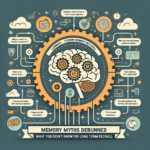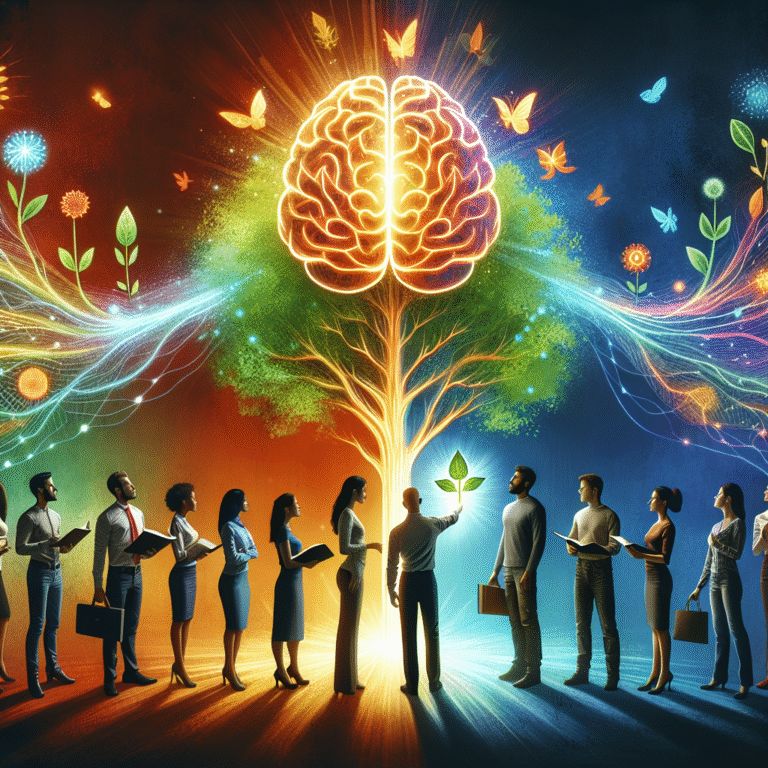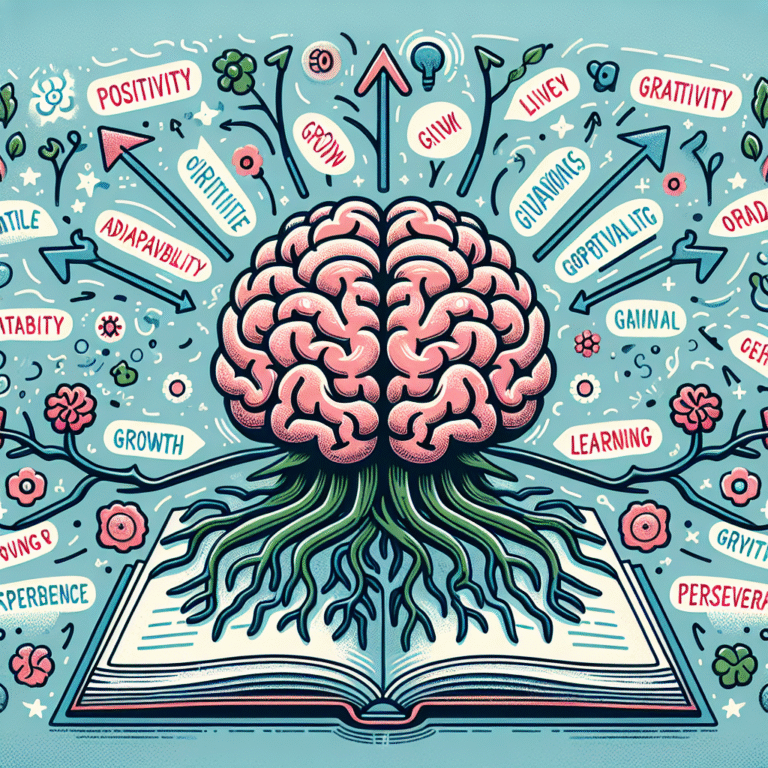Introduction
In a world where communication unites us and languages shape our understanding, the study of how we acquire language becomes increasingly significant. One fascinating lens through which we can explore this journey is Schema Theory, a concept that provides profound insights into how our cognitive frameworks influence the way we learn languages. Imagine attending a foreign language class and realizing that your prior experiences and knowledge can either accelerate or hinder your ability to grasp new vocabulary and grammar. This transformational understanding can be summarized in one phrase: From Memory to Meaning: The Impact of Schema Theory on Language Acquisition. In this article, we’ll delve into how Schema Theory shapes the learning process, offering unique perspectives and actionable insights to enhance your language learning experience.
What is Schema Theory?
Schema Theory is a cognitive framework that helps us organize and interpret information based on our prior experiences, knowledge, and beliefs. Proposed primarily by developmental psychologist Jean Piaget and later expanded by cognitive psychologists, Schema Theory explains how we categorize information into mental constructs or "schemas."
Understanding Schemas
Schemas are essentially mental shortcuts that allow us to make sense of the world. For instance, when someone mentions "dog," your mind quickly conjures an image based on your accumulated experiences with dogs—size, type, behavior, etc. Similarly, when learning a new language, your existing schemas impact how you acquire new vocabulary and grammar rules.
By understanding From Memory to Meaning: The Impact of Schema Theory on Language Acquisition, we realize that our past knowledge serves as a launching pad for new learning endeavors.
The Role of Schemas in Language Acquisition
Activation of Prior Knowledge
One of the most significant aspects of Schema Theory is the activation of prior knowledge. When learners encounter new linguistic structures, they simultaneously access related knowledge stored in their memory. This activation can either facilitate or impede understanding, depending on how relevant the prior knowledge is to the new information.
Case Study: Adult Language Learners
In a recent study conducted with adult learners of Spanish, researchers found that those who had previously studied French (a Romance language) showed faster acquisition rates. Their existing grammatical frameworks allowed them to transfer knowledge about sentence structure, bringing to life the utility of Schema Theory in language acquisition.
Learning Through Context
Another critical element of From Memory to Meaning: The Impact of Schema Theory on Language Acquisition is the way language is acquired within context. Language is inherently tied to the social and cultural experiences of its users. Thus, learners benefit from context-rich environments in which they can connect new language forms to existing schemas.
Case Study: Immersive Learning Environments
Consider a group of English learners who immerse themselves in an English-speaking community for several weeks. Through interactions, they not only learn vocabulary but also pick up cultural nuances and conversational cues. This immersive experience enhances their schemas, making language acquisition more intuitive and meaningful.
The Cognitive Load Theory and Schema Development
Balancing Complexity and Learning
Cognitive Load Theory posits that our brains can only handle a limited amount of information at a time. Language learning often involves intricate grammatical rules, phonetics, and vocabulary, which can overwhelm learners if not approached correctly.
Strategy Implementation: Chunking
One effective strategy influenced by Schema Theory in language education is "chunking." By breaking down complex language structures into manageable "chunks," educators can help learners relate new information back to their existing schemas.
Table 1: Chunking Techniques in Language Learning
| Technique | Description | Example |
|---|---|---|
| Concept Mapping | Visual representation of relationships | Mind maps linking vocabulary to contexts |
| Thematic Units | Organizing lessons around specific themes | Learning food vocabulary in a cooking class |
| Dialogues and Role Plays | Simulated conversations focused on practical use | Practicing greetings in various contexts |
By employing these techniques, learners can effectively transition From Memory to Meaning: The Impact of Schema Theory on Language Acquisition, facilitating a smoother learning curve.
The Interplay of Language and Culture in Schema Theory
Cultural Schemas and Language Learning
Cultural schemas are collective frameworks shared within social groups that inform our understanding of language-specific nuances. The interplay between language and culture is a two-way street: as we learn a language, we concurrently absorb cultural contexts and emotional intonations that enrich our comprehension.
Case Study: Bilingual Learners
A fascinating case study explored how bilingual children navigate different cultural contexts. Researchers found that children who grew up in multicultural environments developed an advanced ability to switch schemas based on situational cues, enriching their language skills. This adaptability illustrates how cultural understanding enhances language acquisition, further emphasizing From Memory to Meaning: The Impact of Schema Theory on Language Acquisition.
Multimodal Learning
Incorporating multiple modes of learning—visual, auditory, kinesthetic—can further support schema development. By diversifying instruction methods, educators can engage learners’ different sensory channels, solidifying their understanding.
Schema Theory Application in Educational Settings
Curriculum Development
The education system can greatly benefit from implementing Schema Theory principles. Designing curricula that build upon students’ prior knowledge can enhance engagement and retention.
Pre-Assessment: Understand students’ existing schemas through pre-tests or discussions.
Integration of New Content: Introduce new vocabulary or grammar rules in relation to what students already know.
- Reflection: Encourage learners to reflect on their learning journey, connecting new information to their expanded schemas.
Technological Tools for Enhanced Learning
In today’s digital era, technology provides myriad tools to support language acquisition through Schema Theory.
Table 2: Technological Tools Supporting Schema Development
| Tool | Description | How It Supports Schema Development |
|---|---|---|
| Language Learning Apps | Platforms like Duolingo for vocabulary building | Makes learning contextual and engaging |
| Online Discussion Forums | Communities for peer interaction | Enhances cultural and contextual knowledge |
| Interactive Games | Language-based games for practical application | Allows full immersion into language use |
These tools create a bridge From Memory to Meaning: The Impact of Schema Theory on Language Acquisition, making the learning process scaffolded and targeted.
Challenges and Misconceptions
Despite the advantages of applying Schema Theory to language acquisition, there are several misconceptions and challenges.
Overgeneralization of Schemas
A common pitfall is the overgeneralization of schemas, where learners may incorrectly apply assumptions from one linguistic structure to another. For instance, a Spanish speaker might struggle with English idioms due to differing cultural contexts.
Underestimating the Role of Individual Differences
Not every learner has the same background or prior knowledge. This variance can lead to disparities in how effectively learners can lodge new information into their schemas. Understanding these nuances is crucial for educators.
Conclusion
As we conclude this exploration of From Memory to Meaning: The Impact of Schema Theory on Language Acquisition, it becomes clear that understanding the intricacies of our cognitive frameworks can revolutionize how we approach language learning. By activating existing knowledge, integrating cultural context, and leveraging technology, learners can transform their experiences in meaningful ways.
The impact of Schema Theory is not merely theoretical but practical and transformative, serving as a guiding principle in modern language education. Equipped with this knowledge, educators and learners alike can embark on a journey marked by deeper understanding and enriched communication.
Actionable Insights
- Reflect on Your Learning: Engage in reflective practices to connect new learning to your existing schemas.
- Embrace Multicultural Experiences: Seek out cultural immersion experiences to facilitate comprehensive language acquisition.
- Utilize Technology: Explore digital tools that enhance engagement and learning.
FAQs
What is Schema Theory?
Schema Theory is a cognitive framework that explains how we organize and interpret information based on prior knowledge.How does Schema Theory apply to language acquisition?
It highlights the importance of activating prior knowledge and contextualizing new information, which aids in learning.Can you give an example of Schema Theory in practice?
Yes, educators can implement pre-assessments to determine students’ existing schemas before introducing new language concepts.What challenges might learners face with Schema Theory?
Common challenges include overgeneralization of schemas and variations in learners’ previous exposure to relevant knowledge.- How can technology support Schema Theory in language learning?
Technology offers tools like interactive apps and forums that create engaging environments for learners, enhancing schema development.
This comprehensive exploration of From Memory to Meaning: The Impact of Schema Theory on Language Acquisition reveals the power of cognitive frameworks in education, providing a roadmap for effective language learning backed by evidence and real-world insights.

















